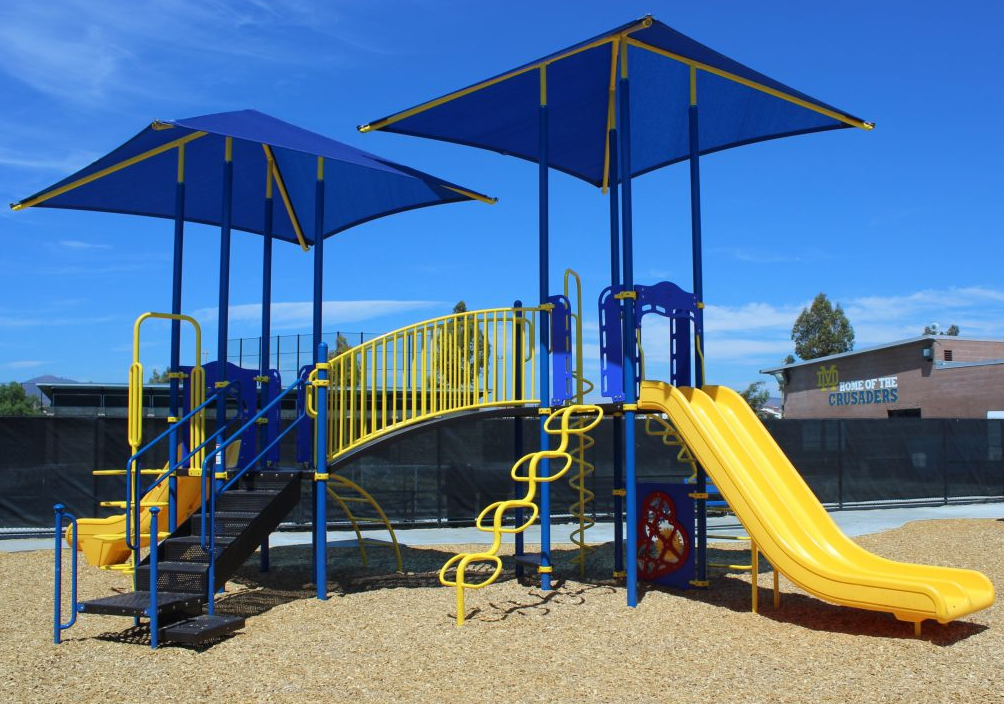Playgrounds are vital for the development and happiness of children, providing a safe space for physical activity, social interaction, and creative play. Selecting the right equipment is crucial for schools, as it not only impacts the enjoyment and safety of the children but also affects long-term maintenance costs and sustainability. This article explores the durability of various types of school playground equipment, focusing on materials, design, and user feedback.
Metal Equipment: Built to Last
Metal playground equipment, such as swings, slides, and monkey bars, is renowned for its durability. Typically made from galvanized or stainless steel, these pieces can withstand harsh weather conditions and resist rust. Galvanized steel, treated with a zinc coating to prevent oxidation, ensures that equipment remains functional and aesthetically pleasing for up to 50 years under proper maintenance. Schools in coastal areas often opt for stainless steel due to its superior resistance to saltwater corrosion.
Plastic Components: Colorful and Safe
While metal stands out for durability, plastic equipment offers vibrant, versatile designs. Modern playground plastics are UV-resistant and made from high-density polyethylene (HDPE) or linear low-density polyethylene (LLDPE). These materials do not fade, crack, or peel as quickly as older versions. A study from the Consumer Product Safety Commission notes that plastic equipment can last approximately 30 years if it avoids direct, prolonged exposure to sunlight, which accelerates material degradation.
Wooden Structures: Natural and Nostalgic
Wooden playground equipment, often chosen for its natural aesthetic and ability to blend with outdoor environments, typically includes materials like cedar, redwood, and pressure-treated pine. Redwood and cedar are naturally resistant to rot and pests, offering a lifespan of 20 to 30 years with regular maintenance. Pressure-treated wood, while more susceptible to warping and cracking, is treated with preservatives that extend its life by protecting against fungi and insects.

Composite Materials: The Best of Both Worlds
Composite materials, combining wood fibers and plastic polymers, are becoming increasingly popular in playground design. This material resists many of the weaknesses of traditional wood, such as susceptibility to insect damage and rot, while maintaining a more natural look than full plastic setups. According to industry reports, composite playgrounds can efficiently serve for over 40 years, with minimal maintenance beyond regular cleaning and inspection.
Case Studies and User Feedback
Feedback from various schools indicates a preference for metal and composite equipment due to their longevity and minimal maintenance requirements. For instance, Lincoln Elementary in Nebraska reports that their metal play structures have remained in excellent condition for over 20 years with only minor repainting. Conversely, Sunnydale School in Florida highlights the enduring color and stability of their composite playground, which has not shown signs of deterioration even in the humid, sunny climate.
In conclusion, when selecting school playground equipment, considering the balance between initial cost, maintenance needs, and expected lifespan is crucial. Metal and composite materials offer the greatest durability and are particularly suitable for environments where long-term usability and low maintenance are priorities. Schools should also consider the specific needs of their climate and student population to choose the most appropriate materials.